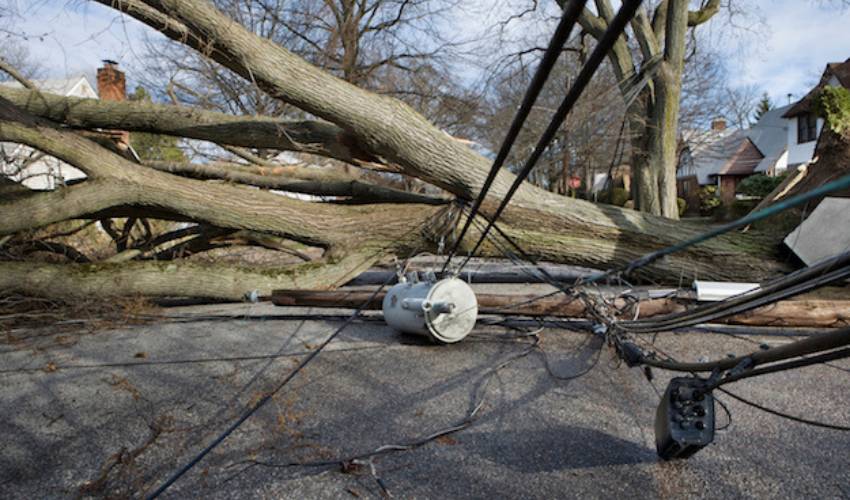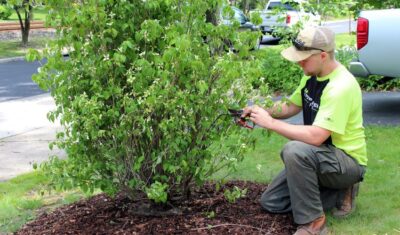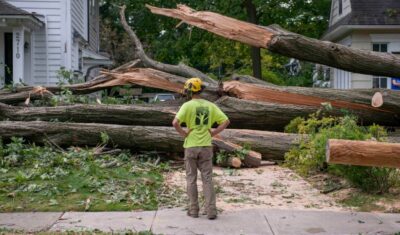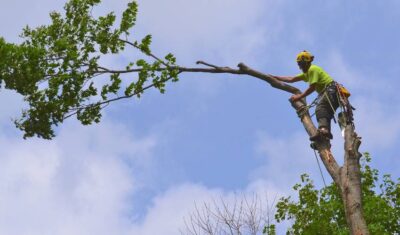Are leaning trees a cause for concern? Do they pose a threat to your safety? It’s not always easy to tell, but understanding the potential dangers and risks associated with leaning trees is crucial for every Northeast Ohio homeowner.
In this article, we will explore what causes a tree to lean, when leaning trees become dangerous, and whether leaning trees can be fixed. By recognizing the signs and knowing when to seek professional help, you can ensure the safety of your property and loved ones.
Let’s dive into the unbalanced world of leaning trees and uncover the truth about their potential hazards.
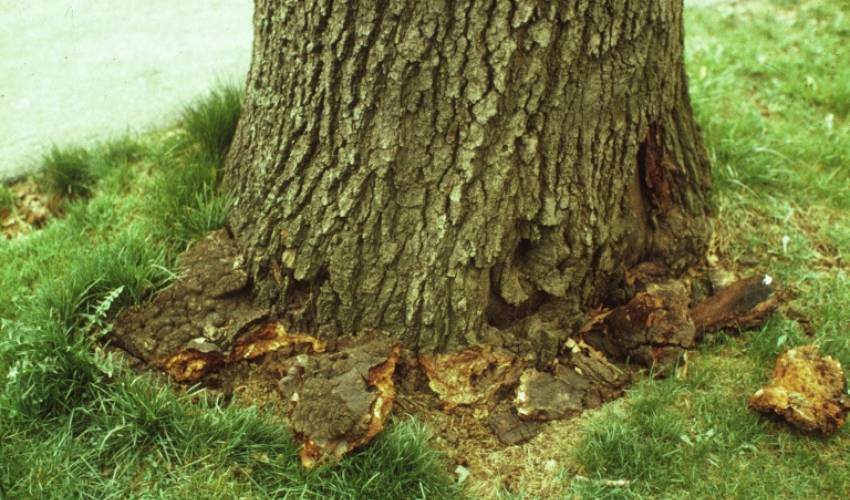
The brittle, broken base of this tree trunk signals root decay. Photo used courtesy of Joseph O’Brien, USDA Forest Service, Bugwood.org.
What Causes a Tree to Lean?
There are several factors that can cause a tree to lean. It is important to understand why trees lean, since this can help determine whether or not they pose a danger.
One common reason trees lean is due to strong winds or storms. These natural forces can cause a tree’s roots to weaken or loosen, resulting in a leaning tree.
Another factor that can contribute to a tree leaning is poor soil conditions. Heavily compacted soil can impact a tree’s roots’ ability to spread out and become an anchor for the tree. Additionally, if the soil lacks stability or proper drainage, it can lead to erosion, which can cause the tree to tilt.
In some cases, disease or insect infestation can weaken a tree’s structure, making it more prone to leaning. For example, if you notice mushrooms growing around the base of your tree or out of the trunk, your tree could be suffering from root rot.
Understanding the causes of a leaning tree, such as strong winds, poor soil conditions, or root damage, can help you assess the risk and take appropriate action.
When Do Leaning Trees Become Dangerous?
Leaning trees can pose a danger, especially if they are near structures or in high-traffic areas. If you have a leaning tree on your property, it is advisable to contact a professional tree service to address the issue and ensure the safety of your surroundings.
One of the main factors in determining if a leaning tree is dangerous is the angle of the lean. If a tree is leaning at a significant angle (forty-five-degree lean angles typically signal a high risk of failure), it can indicate that the tree’s root system is compromised or that the tree is structurally weak. As a result, the tree may be more susceptible to falling during strong winds or storms. Also, you should consider how quickly the lean occurred. A tree that leans quickly is at greater risk of failure than a tree that has begun to lean gradually over time.
Another factor to consider is the condition of the tree itself. If the tree shows signs of decay, disease, or insect infestation, it may be more likely to fall. These issues can weaken the tree’s structure and make it more prone to failure. Additionally, if the tree has large dead branches or a significant amount of deadwood, it can increase the risk of falling.
And again, the presence of other stressors, such as heavy rain or saturated soil, can further increase the risk of a leaning tree falling. These conditions can weaken the tree’s root system and make it more likely to topple over.
Leaning trees can become dangerous when they have a significant lean, show signs of decay or weakness, are located near structures, or are affected by other stressors. It is important to assess the risk posed by a leaning tree and take appropriate action, such as consulting with a professional arborist, to mitigate any potential danger.
Can Leaning Trees Be Fixed?
You can fix a leaning tree by calling a professional arborist to assess and address the issue. As mentioned, leaning trees can be a cause for concern as they may pose a threat to your property and safety, but not all leaning trees need to be removed. In some cases, they can be fixed and saved.
The first step in fixing a leaning tree is to call an arborist who specializes in assessment and structural support. They will conduct a thorough assessment of the tree to determine the cause of the lean and evaluate its overall health. This evaluation will help them develop a plan for fixing the tree.
One common method used to fix a leaning tree is tree cabling or bracing. This addition of structural support involves installing cables or braces to support the tree and prevent further leaning or potential falling. The arborist will carefully select the appropriate hardware and install it in a way that provides the necessary support without causing harm to the tree.
Tree straightening is another option for some leaning trees. This method consists of securing the leaning tree’s trunk with a rope and pulling it straight over time, adjusting the tension of the rope as the tree moves. Think of it as how an orthodontist periodically tightens branches to gradually straighten teeth over time.
It’s important to note that not all leaning trees can be fixed. If the tree is too damaged, diseased, or in a dangerous location, removal may be the only option. The arborist you hire will be able to provide guidance on whether fixing or removing the tree is the best course of action.
Need Help with a Leaning Tree?
Call Independent Tree today at 440-564-1374. We’re your Northeast Ohio tree care experts. Our professional team has the experience and training to handle leaning trees or any other tree situation you’re facing. Trust us to take care of all your tree care needs!
Worried about a leaning tree?
If your tree has started to lean, contact Independent Tree to schedule a tree assessment.Recent Articles
Topics
About The Author

STAY IN THE LOOP
WITH OUR
LATEST UPDATES
"*" indicates required fields

